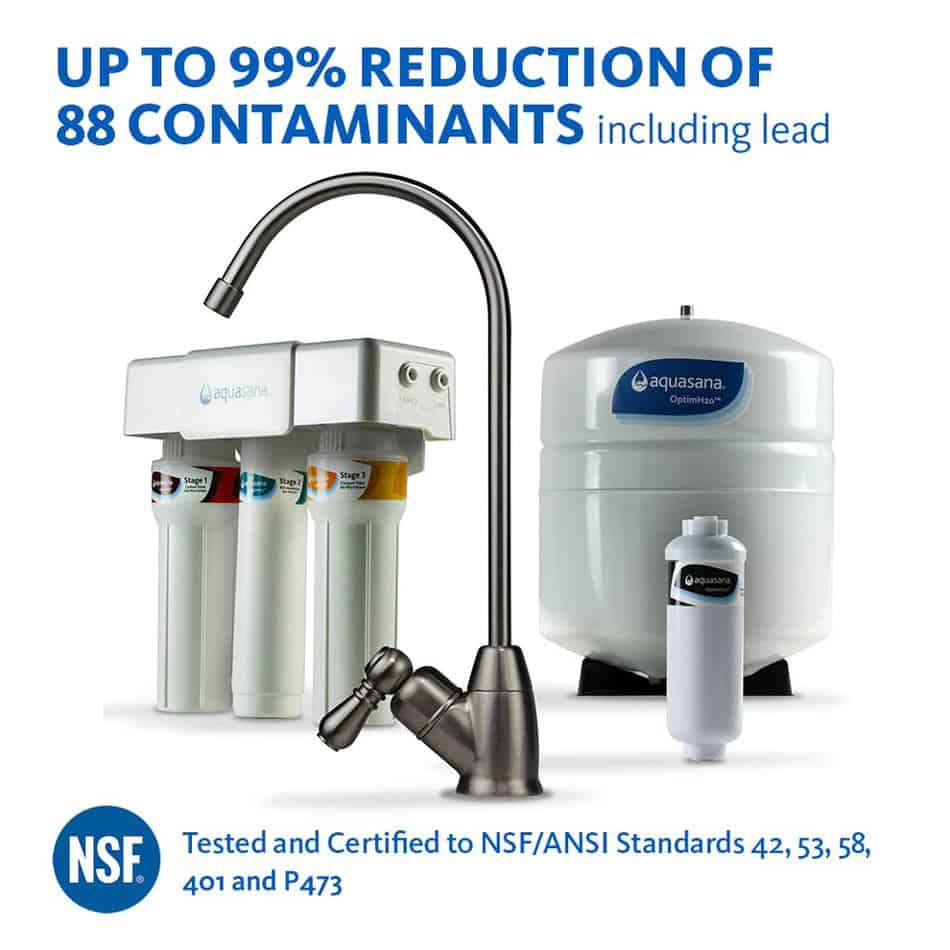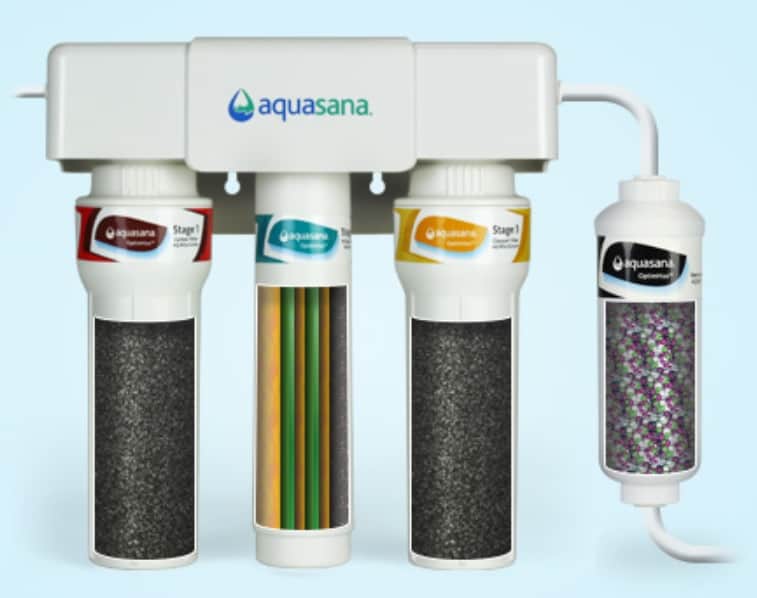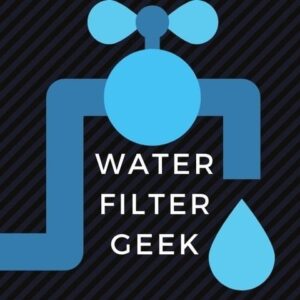Removing microplastics from water filters have become a much bigger topic, since the research is now out that these tiny bits are abundant all around us.
What is the best eco water filter for removing microplastics in your water?
Clean water is the next big thing!
Completely kidding, it has always been the big thing, and in order to have clean water, you need the proper filtration system to ensure this.
Microplastics are one of those “you do not belong here” items in your water.
Which Eco Water Filter is Best for Removing Microplastics? Reverse Osmosis systems filter remove microplastics by pushing water through a semipermeable membrane, thoroughly removing fine impurities. Aquasana OptimH2O Reverse Osmosis + Claryum & Crystal Quest Whole House Reverse Osmosis System remove microplastics this way.
Are there water filters that are eco-friendly and can still remove microplastics and other contaminants thoroughly?

There are plenty of systems out there that can efficiently accomplish this for you and your household as per the above.
Continue reading to understand microplastics, and how they make their way into your drinking water, and what’s behind the effectiveness of reverse osmosis systems.
Eco Water Filters that Remove Microplastics
There are so many different eco-friendly water filters out there, however, we are going to focus on those that use reverse osmosis and are either under the sink filtration systems or whole house systems.
What is Reverse Osmosis?
Reverse osmosis helps dissolve all sorts of contaminants. A pre-filter is used to filter all of these things out through the force created by reverse osmosis and all the bad is left behind after being strained through the semipermeable membrane.
Impurities are then filtered out and your water now can be free of nasty tastes and you can go on your way drinking and cooking without worry.
Sediments and contaminants are then collected in the filters and flushed down the drain and one final filtration step is made to ensure that your water tastes exactly as it should when coming from your own kitchen sink.
Reverse Osmosis water filtration systems also are fantastic in that it remineralizes your water to help account for any good minerals being extracted during the reverse osmosis process.
Another win for you and your water!
Below are 3 of the best eco water filter reverse osmosis filtration systems.
Aquasana OptimH2O Reverse Osmosis + Claryum
With an eco water filter, you want one that is going to make the most efficient use of your water and energy. Additionally, you will look for ways that your filtration system reduces plastic waste by increasing water filter cartridge life. This option does just that.

The Aquasana OptimH2O Reverse Osmosis + Claryum water filtration system is an under the sink filtration system that will get you where you are wanting to go with your water fast. Reverse osmosis helps to filter out dissolved solids that are less than 1 micron (microplastics are usually around .5).
It uses activated carbon filters that help to reduce organic chemicals such as herbicides, pesticides, and VOCs. Catalytic carbon is also used to remove chlorine and chloramines. This is helpful in the environmentally-conscious output of materials that your system will filter.
Ion exchange works to filter out all those nasty heavy metals like lead and mercury and it even has an absolutely sub-micron filtration that throws asbestos and chlorine resistant cysts down the drain.
Hearing of these different contaminants, you may be shocked at how many are present in your everyday water.
A nasty reality, but one that does not have to continue for you and your family as they can be filtered away with the OptimH2O.
The greatest feature of this system though is that it has a remineralization step at the very end of its filtration process.
Sometimes, reverse osmosis can take away the good minerals in water that our bodies need in order to stay healthy.
This system puts back healthy minerals into the water to improve the pH balance as well as the water’s alkalinity. With the OptimH2O you do not have to worry about losing good minerals when getting rid of nasty contaminants.
Crystal Quest Whole House Reverse Osmosis System
If you are looking for something that goes beyond your kitchen or bathroom sink, then the whole house reverse osmosis system by Crystal Quest is your guy. The design of this system is super fantastic as it is sleek and compact.
Plus, since it is a whole house water filtration system, you can rest assured that you will not need to replace multiple filters throughout your home (like replacing a shower head filter and an under sink water filter cartridge).
Instead, you can reduce plastic waste with this eco-friendly microplastic-removing water filter.
To tote with its nice design, it will get every spout in your house dripping with only the cleanest water. This system comes with the Reverse Osmosis system, a water tank ranging from all different sizes to fit different needs, and even a float switch.
This system is efficient and works to create as little water waste as possible. The filters are also extra eco-friendly because they are made of a coconut-based carbon filter cartridge for smaller systems and those that are larger have filters that are reusable.
The Whole House Reverse Osmosis System can also be customized to fit all your needs into one great package with very little maintenance required.
This system is able to give you all the perks of reverse osmosis but is able to get it to every room in your home without having to invest in different systems for each room.
A bit of investment in this system can lead to great rewards as you will find a product that gets and keeps your water clean without having to worry about the system failing.
What Microplastics are in Your Water?
Now that you know the best eco water filters for removing microplastics, it is important to understand what these are.
Then, you can more easily understand how they are removed by Reverse Osmosis water filtration systems.
What Microplastics are in Your Water? Microplastics are tiny pieces of plastic that have broken down from larger pieces. They are found in the ocean, in food, and are also air bourne.
They are typically so small that they are considered to be microscopic, but depending on your local area and the filtration of your town or city before personal filtration, they can vary in length, shape, and size.
It’s said, that the fleece or polyester piece of clothing you and I wear, also creates the problem. Every time you wash this stuff, microplastics will go down the drain (unless you have a filter like this).
The biggest thing to note is that microplastics are not super safe to consume.
They are harmful to marine and aquatic life, especially when consumed in large amounts and thus should not be consumed by humans.
With microplastics being present in many different types of bottled and tap water, it may leave you wondering what the dangers are behind its presence and what you can do to get these pesky little water residents out of your cup.
How Do Microplastics Make Their Way into Drinking Water?
Microplastics actually have quite a few different sources. First, they can simply come from plastic water bottles.
This is bad news for those of you who are religious water bottle purchasers, but hopefully finding a water filter means you are on your way to less waste and less consumed microplastics.
It has also been found that microplastics can be a result of the manufacturing industry, can be present due to the breakdown of larger plastic items in the water, and can even be a result of clearing products.
I bet your tap water is sounding super appealing right this second, isn’t it?
These little guys are less than appetizing, unfortunately, they are part of our environment and due to their small size, can sometimes get past larger filtration systems.
No matter how hard city filtration systems may work, they sometimes are not equipped to deal with every single contaminant found within the water.
Try as they might, microplastics are resilient and defiant particles.
They are small, hearty, and can easily find their way into your sink.
This is where the need for a secondary filtration comes in that can target those tiny contaminants and ensure that you have healthy, clean water.
Why Use a Reverse Osmosis System?
We know that microplastics are exactly that – micro. With their tiny size being the biggest problem for filtration, you need a system that’s focus is to remove even the smallest of contaminants.
What this means for your filter choice is a reverse osmosis system.
To its core, reverse osmosis systems work to take away the tiniest of nasties out of your water through its effective process.
Reverse osmosis is taking a solution with a high concentration of solutes and forcing that solution through a semipermeable membrane which results in a solution that has a low concentration of solutes.
For your water, this means taking water with a high concentration of contaminants, forcing it through a semipermeable membrane that lets the water pass through the membrane, but leaves the contaminants behind.
Through this force, your water is left free of microplastics as well as other nasty items that are best left out of humans mouths.
Reverse osmosis is able to get even the smallest of contaminants out of your water through its use of the semipermeable membrane and pressurized filtration system thus leaving you reassured that those tiny microplastics are left in the dust.
